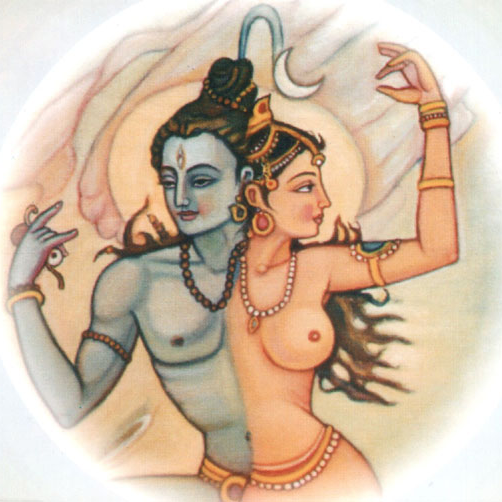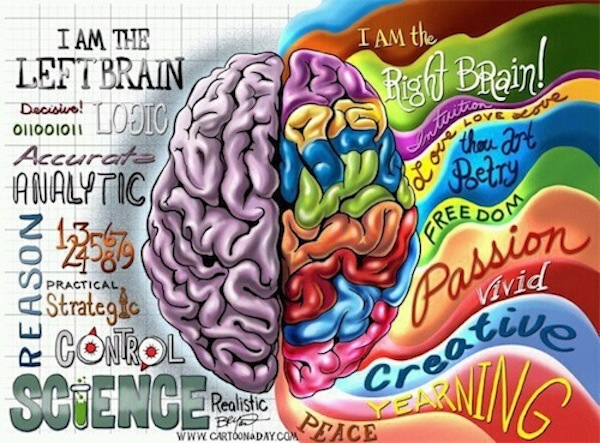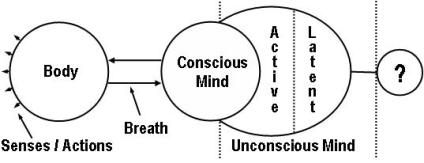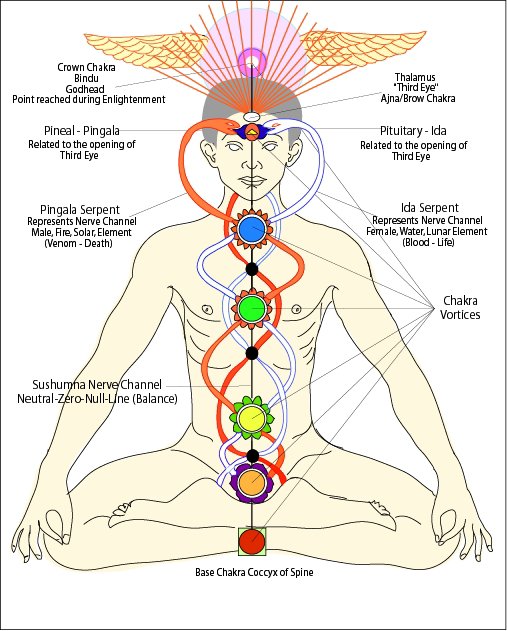“Our biological body itself is a form of hardware that needs re-programming through tantra like a new spiritual software which can release or unblock its potential.”- Slavoj Žižek

Tantra Yoga: The Science of Enlightenment
I am not the kind of person who ascribes himself to any particular belief system or religious sect. I have always been interested in learning from all the world’s traditions and religions. I take what I resonate with and apply it to my life.
As I got older I got really interested in the ancient mystery schools of the East. Tantra is one tradition that I find to be extremely valuable and oftentimes misunderstood in the West. People from the West seem to only associate it with its sexual connotations.
I would like to introduce you to this fascinating system of knowledge that has the potential to transform you through its practical spiritual methods.
Tantra has no single coherent doctrine; instead, it developed a variety of teachings in connection with the religions adopting the Tantric method.
In the scriptures of Tantra, it is given in the form of a discourse between “Shiva” and “Shakti”. Shiva meaning the “Auspicious one,” refers to the infinite supreme consciousness, and is considered the Supreme God within Shaivism. In Shaivism, Shakti embodies the active feminine energy of Shiva and is identified as Mahadevi or Parvati. When Shakti manifests as Shiva’s counterpart in this divine cosmic play known as “Lila,” she asks Shiva how is one supposed to achieve peace in this dimension of time and space.

Shiva then goes on to describe all the various methods and practices to penetrate and realize reality. Shiva presents his sacred teachings in a way that the people of that time could grasp them.
Tantra states that by knowing the microcosm (human), we can know the macrocosm (universe). To know the universe we simply need to go in.
Starting Your Spiritual Awakening

The journey starts at the base of our spine, the “Muladhara” Chakra, where the spiritual energy of Shakti is dormant and coiled up (kundalini). Our whole effort is to help Shakti awaken and help it rejoin Shiva in the “Sahasrara” Chakra at the top of the cranium. Shakti stays dormant because our minds are solely preoccupied with our sense perceptions. We are too identified with our bodies and gross forms.
Tantra changes how we perceive the world because it is a practical approach that deals with our psychophysical energy. It fine-tunes our instrument (body) by directing and transforming our subtle psychic energies. Our level of being is raised and we realize the supreme truth of our existence.
The chief center of our consciousness lies in the cerebrospinal system and in the upper brain. This system is an immense network of nerves (nadis) producing electrical energy and serving as the vehicle for the life force (prana) that flows through our organism. In the back of the head lies the cerebellum, known as the lower brain, home to the subconscious mind. This is known as the mechanical brain, the cobra brain, or the reptile brain. The upper brain, the conscious part of our brain is a more recent development in our human organism.

Our entire body is controlled by our cerebrospinal system. It is through this network that our chakras are activated and balanced.
Our whole effort is to fine-tune our organism to a balanced state. This means joining the upper and lower parts of the brain, as well as balancing the relationship between the left and right hemispheres of the brain. As we are now we are unbalanced, and because of this, we live a life of duality. One where our conscious brain is at war with our lower brain causing a variety of psychological complexes.

The word yoga basically means “to unite,” it is a system that unites the upper brain with the lower brain, and in dissolving this dichotomy the individual’s consciousness merges with the cosmic consciousness and you realize that it is all the same. Consciousness is indivisible, but our identification with the false sense of self, our I-consciousness, blinded us from the truth.
Consciousness looks out into the world, through the mind, and then through the senses and body. Consciousness eventually becomes totally Identified with the instrument (body), causing it to take the reflections as the only reality.

Mind in Yoga is not the same used in modern psychology to denote an aspect of the brain that produces thought, volition, and feelings. The brain is considered to be a tool of the mind, but the mind itself is not the brain. Yogis approach the psyche by searching for its cause in the mind and consciousness. Psychologists try to define it by studying behavior.
Through yoga we train our minds, we become masters of our attention, in doing so we change our brains. We achieve a state of being full of equanimity, one where the fluctuations of our brains level out (left and right hemispheres become one) and inner peace is discovered. The monkey mind is seen for what it is.
The 5 States of Mind
In Patanjali’s Yoga Sutras he has identified 5 states of mind:
- Disturbed Mind (Kshipta): This is usually when the mind is running in various directions; we are scatterbrained. In this state, we are functioning very superficially and are unable to contemplate or comprehend anything deeply. It might be worried, troubled, or even chaotic. It has an intense, negative, and emotional involvement.
- Dull Mind (Mudha): In this state, we become completely engrossed in our thoughts. Sometimes it is self-forgetful, it is full of foolishness. It is a frame of mind akin to when we want to do nothing, lethargic, to be a couch potato.
- Distracted Mind (Vikshipta): In this state, the mind is mostly wandering, but steady on occasions, although this requires a lot of effort. This is the monkey mind that people often talk about as disturbing meditation. The mind can concentrate for short periods of time and is then distracted by some attraction or aversion. Neither noticeably disturbed nor dull and lethargic.
- One-pointed mind (ekagra): It is a peaceful, pleasant state of mind. An aspirant in this stage can concentrate easily and for extended periods of time. Here, concentration is not forced as in vikshipta but comes effortlessly and naturally. When the mind has attained the ability to be one-pointed, the real practice of meditation begins. The one-pointed mind is fully present in the moment and able to attend to people, thoughts, and emotions at will.
- Mastered (niruddha): This is a state devoid of thought. It is akin to being in deep sleep yet totally alert. The unconscious-conscious state of “asamaprajnata samadhi”.
Yoga seeks to help you master your mental processes so you can clearly see the nature of your psyche to then be able to transcend your ordinary mind. You use the mind to kill the mind in a sense.
The Four Yoga’s of Tantra Yoga
Tantra Yoga is also called Maha (the great) Yoga, which is a combination of the four main Yogas.
1. Mantra Yoga: The Sanskrit meaning of Man is “mind, consciousness,” and Tra means “to free”. Thus through the power of sound and devoted mindful repetition, the mind becomes controlled and concentrated.
2. Hatha Yoga: Hatha is a combination of two sounds and translated as ha meaning “sun” and tha meaning “moon.” This refers to the balance of masculine aspects—active, hot, sun—and feminine aspects—receptive, cool, moon—within all of us. Through various practices involving different postures (asanas) and breath control (pranayama) sequences of asanas, designed to align your skin, muscles, and bones. The postures are also designed to open the many channels of the body—especially the main channel, the spine—so that energy can flow freely through the nadis. Through a strong healthy body, one is able to meditate for long periods of time, thus helping one transcend the confines of the body.
3. Laya Yoga: Laya means “dissolution” or “absorption.” Laya yoga is also known as Kundalini yoga. Kundalini refers to the latent female energy believed to lie coiled at the base of the spine. Kunda means bowl, or cave, and refers to the bowl of fire of consciousness resting in the first chakra at the base of the spine. Lini refers to that which resides in that bowl. Kundala means coiled, as the Shakti forms in a coil there. It is often symbolically represented as a coiled serpent lying at the base of the spine. Thus all types of yoga can be seen as Kundalini Yoga because they all seek to awaken this innate energy center within every human being.
“Kundalini Yoga consists of active and passive asana-based kriyas, pranayama, and meditations which target the whole body system (nervous system, glands, mental faculties, chakras) to develop awareness, consciousness, and spiritual strength.” —Yogi Bhajan
4. Raja Yoga: It was first described as an eightfold or eight-limbed (ashtanga) path in the Yoga Sutras of Patanjali, and is part of the Samkhya tradition. Raja means “royal,” so Raja Yoga is also known as the royal path of yoga. In Raja Yoga, systematic concentrated thought combined with spiritual reflection is used to withdraw from sensory perceptions (pratyahara). Raja Yoga is concerned with the mind (citta) and its fluctuations (vrittis) and how to quiet or master the mind’s fluctuations. In completely stilling the mind, one is eventually able to achieve union with supreme consciousness (asamprajnata samadhi).
Each of these 4 Yoga’s is a part of Tantra Yoga. When all four are combined, a seeker is able to select what he needs and resonates most with. In Maha Yoga, extreme importance is placed on working with prana. Prana is the life force that animates everything in the Universe. Through various kinds of breathing exercises the prana is used to cleanse the subtle nerves (nadis) and arouse the sleeping kundalini shakti.
In reality, Prana is one, but for yoga’s purposes, it is further divided into 5 types according to its place and movement within the human organism.

- Udana (head and throat region/vishuddha chakra, ajna chakra): It’s said to be the force behind all growth, our ability to stand erect, speech, effort, enthusiasm, and will. It helps the seeker with his mantra japa sadhana.
- Prana (chest region/anahata chakra): It is the primary life breath. Located in the chest it ensures that the heart goes on beating. It works to support the proper temperature of the body relative to one’s environment and sustains one’s vital organs, particularly the heart. Though its seat is in the heart, it moves through the center of the body in a downward direction from the base of the throat to the navel, as well as from the navel back up to the throat.
- Samana (stomach region/manipura chakra): Moves primarily in the region between the navel and the heart (solar plexus), and its seat is said to be in the navel. It is the controlling power of the metabolism or “digestive fire” and the functioning of the digestive organs and glands. Samana is responsible for cooking the food and separating the nutrients from waste matter. When there is a disorder in our digestive system, one can be delusional or of unsound mind.
- Apana (intestinal region/muladhara chakra): Its energy moves primarily in the lower abdomen from the navel to the floor of the pelvis. Apana is the aspect of the prana that governs the ability to eject or eliminate what is not needed in the system. It is also responsible for flatulence, ejaculation, conception, defecation, and urination.
- Vyana (entire body): Vyana circulates continuously throughout the body and regulates the three basic systems: circulatory, lymphatic, and nervous. Vyana is fundamental to making one feel and function as an integrated whole.
Tantra helps you work with the Prana, which we receive through nasal breathing. The nose is in direct contact with the hypothalamus by its link with the olfactory lobe of the brain. The hypothalamus regulates body temperature, which influences the mental processes that are interpreted by the brain as emotional states.
In working with Pranyama there are three main nadis that are of particular interest to the Yogi. They are ida, pingala, and shushumna Nadi. Ida nadi is associated with the moon’s energy (cool), or negative polarity and feminine attributes. It starts at the base of the spine and ends in the left nostril. Pingala nadi is associated with the sun’s energy (fire), or positive polarity and masculine attributes. It starts at the base of the spine and terminates in the right nostril. The right nostril, being solar, increases acidic secretions, whereas the left nostril, being lunar, increases alkaline secretions. Shushumna nadi connects the base chakra to the crown chakra and has a very delicate Nadi inside of it called Brahma nadi, which is thought to be the carrier of spiritual energy. When the spiritual energy that is dormant in the kundalini is aroused it begins to move up through the Brahma Nadi. The Shushumna nadi is the only nadi that directly pierces all of the psychic centers (chakras) of the subtle body.
Sometimes the three main nadis (Ida, Pingala, and Sushumna) are related to the Caduceus of Hermes.

On average a human being breaths at a rate of fifteen breaths per minute or 900 times every hour. If you pay attention to your breathing you will see that about 890 breaths will be taken predominantly by only one nostril either the ida or pingala. Just by identifying the predominatly flowing nostril, it will give you insight into your current state of mind. Only about 10 of those breaths will be taken together, and this is when temporarily the shushumna nadi will be activated. But through the breathing exercises of pranayama and swara yoga, one can learn to alter the flow and activate the shushumna for longer periods of time. When the shushumna is active and free-flowing, the right and left hemispheres of the brain are balanced and thus give way to a peaceful state of being. This is the ideal state to attempt meditation. Our breaths are the bridge between our bodies and mind, so by mastering one’s breath, we end up mastering our minds.
When we are absorbed in deep contemplation the body becomes calm and motionless. The metabolism and vital function of the body slows down. When we become completely dis-identified with our physical senses the kundalini moves through the hollow path inside the vertebral column, passing through the chakras until it reaches the Sahasrara Chakra.
After its union with Shiva, the Kundalini makes her descent back to the Muladhara chakra and the Yogi returns to his normal state of consciousness.
The 4 States of Consciousness
Yoga identifies 4 distinct states of being in which consciousness can operate.
1. There is “Jagrat” or wakeful state, this is our normal state, where we have “I” consciousness and is more powerful than our individual thoughts. We can choose where to put our attention.
2. Next is “Swapna” or dream state, this is where our thoughts are more powerful than our sense of “I”, this is why most of us don’t realize we are dreaming.
3. The third state is “Shushupti” or deep sleep (unconscious state), in this state we have neither “I” consciousness nor thoughts.
4. The fourth state is called “Turiya”, there’s no real modern psychological term for this state, this is simply a state of full awareness, where you have “I” consciousness but no thoughts. This is the domain of meditation, intuition, your creativity. The sages called it “samadhi”. The one who has experienced Turiya will never see the world as he used to.
The Three Gunas
The waking, dream, and sleep states are said to be influenced by the three gunas. According to Yoga and Ayurveda, all of material nature (Prakriti) is thought to be made up of three primary qualities or “gunas.” These three gunas make up the essential aspects of all nature—energy, matter, and consciousness.
In Sanskrit gunas means, “what binds,” because if the spiritual seeker understands and applies them wrongly he will be kept in bondage to the external world.
1) Sattva – the power of harmony, balance, light, and intelligence; higher spiritual potential.
2) Rajas – the power of energy, action, change, and movement.
3) Tamas – the power of darkness, inertia, form, and materiality.
On a practical level, these same qualities and processes are at work within each of us. Both our bodies and our minds are subject to the ebb and flow of the gunas within us. Each of us is thought to have an intrinsic mix of these qualities (called doshas). It is the aim of yoga practice, in all its various forms, to bring into balance our individual mix of sattva, rajas, and tamas.
Sattva and the Mind
Unless the mind is calm and clear we cannot perceive anything properly. Sattva creates clarity, through which we perceive the truth of things, and gives light, concentration, and devotion. Rajas and Tamas lead to corrupted mental energies causing wrong imagination and misperception.
Someone under the power of Rajas is motivated solely by the external world and seeks enjoyment through the body’s senses.
Under Tamas, we fall prey to inertia and resistance to taking action. Tamas leads to ignorance of our true nature. We become mentally dull and weak. To get out of Tamas we must then counteract its effects with self-motivated action (rajas). From rajas, we will need to calm our energies through selfless service and meditation.
“You should know, O Arjuna, tamas as the cause of delusion enslaving all embodied beings born of nescience; by negligence, listlessness and somnolescence.” – Bhagavad Gita
Sattva is the balance of Rajas and Tamas, combining the energy of Rajas with the stability of Tamas. Sattvic individuals always work for the welfare of the world. They are hardworking, alert, and generous. Let us all strive to achieve a sattvic lifestyle.
Thank you so much for reading my basic overview of Tantra Yoga, I hope you found it helpful. Please stay tuned for further posts that will get into the practical application of its methods. Peace and love.
If you enjoyed this post please help me out by passing it along to your friends and ‘like’ our Facebook Page. Also, if you have any of your own insights please share them in the comments section.

What a lovely and in-depth post Ivan! I really look forward to your future posts on tantra. Namaste.
Thanks for the support my friend…be well..namaste…
Hi
Lovely articles and full of wisdom. Will be sharing them with students. I am a mathematics teacher.
Thank you.
Abe
Wow, that’s is great. Thanks so much for sharing the ideas with your students. Hope they find some value in them.
Informative, inspirational and very relevant.
Thanks
Abe
My pleasure, glad you liked it!
Ivan, your posts are wonderful.
Thank you, glad they resonated with you 🙂
Sounds Interesting… It is very informative and I Like this Post….
Thank you for this, it helped clear some things up for me, you made it so easy to understand…been looking for an article like this. 🙂
My pleasure, glad that it resonated with you. Many blessings to you. Peace.
nicely explained
I never tried yoga before but I heard that it is good for the body.
Hi Ivan,
It was a great post and thank you for the superb explanation.
I am someone who experienced divine union (samadhi) accidentally about 9 years ago due to ego death and subsequent abandonment of all desires. I was not a spiritual seeker and unprepared for the spontaneous kundalini awakening resulting in shiva/shakti union. It’s only recently that my life has began to come into balance and I am now seeking a path to return to that state of bliss with more control and intention. Or, as you put it, to live in Turiya. There aren’t many people I can relate to concerning this many seek these things but few are fortunate enough to actually experience it. From your post I can tell that you have a deep understanding of these matters… can you point me to more authentic resources and or people who can aide me on my path to integrating this blessing within a practical lifestyle?
Excellent post sir.